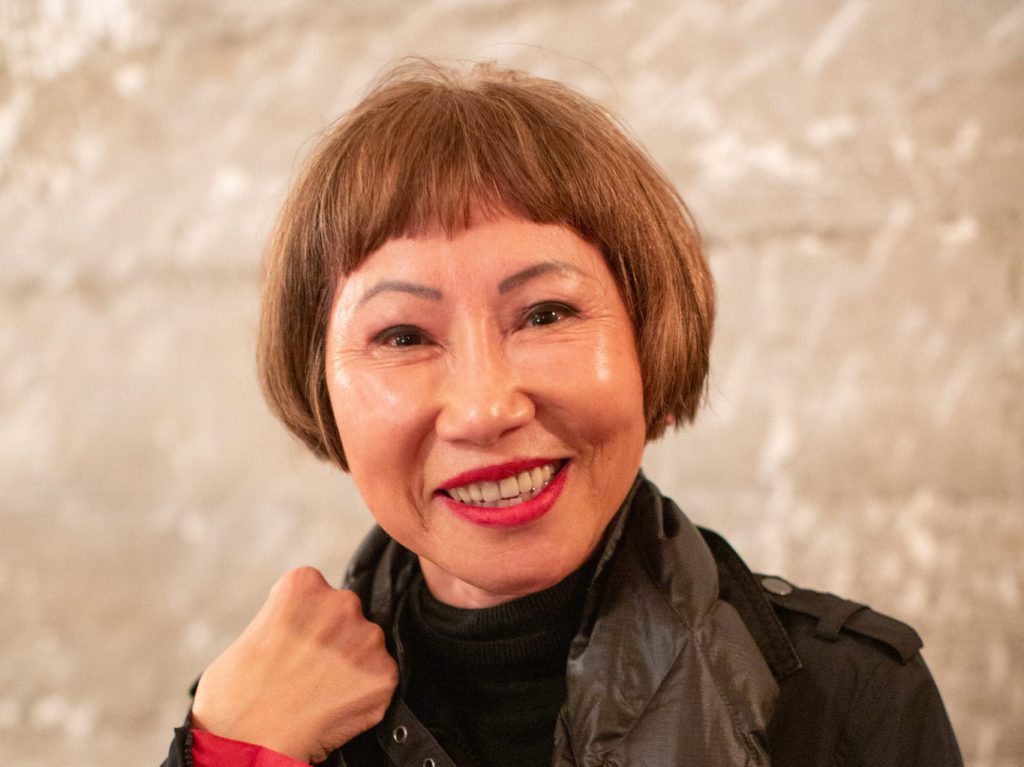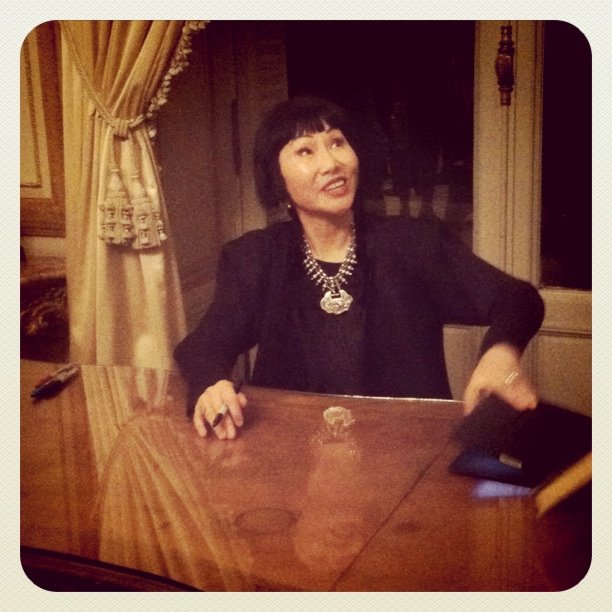Amy Tan’s Top 13 Writing Tips
Amy Tan wrote the runaway bestseller The Joy Luck Club, which reportedly sold over three million copies.
Then Tan followed up that book with five more bestselling novels, along with several nonfiction books and children’s books. Tan recently shared her writing secrets in a MasterClass about fiction and imagination.
If you haven’t yet spent the $180/year for a MasterClass subscription, you can find Tan’s top 13 writing tips below. (All quotes are from her MasterClass.)
1. Identify as a writer
Tan observes that many people hesitate to label themselves as writers. Why? Because it’s scary. It can make us feel like impostors, claiming a title reserved for elites like Hemingway, Austen, and Dickens.
“A lot of people say, ‘I’m not really a writer. I’ve just started,’” says Tan. “If you are serious, you are a writer.”
As I’ve said in the past, there’s no such thing as an “aspiring author.” You either write or you don’t. Have you been writing lately? Great, you’re a writer! You don’t only earn the title once you’ve cranked out 10 books or quit your day job. You earn the title daily by whether you write.
2. Use difficulties to enrich your work
I love hearing experienced authors discuss how they found their voice. Tan believes your voice is the way you think. It’s the sum total of all the life experiences that inform who you are when you pick up the pen.
She explains that your voice especially contains all of the difficult things you’ve experienced. “My voice includes everything that has been traumatic,” says Tan. “It would be those moments that cause me to question myself, and so my voice continues to be enriched.”
According to Tan, difficulty enriches your work and your voice — it doesn’t weaken it. We grow most through the hardest times, and those times chisel the features of our character and our writing.
3. Leverage fiction to explore the truth
“I would say fiction is actually one of the best ways for finding truth,” says Tan. “We’re not talking about the ideal of how people should behave. We’re talking about real behavior.”
Looking back on the books that have moved me the most, many of them have been novels rather than nonfiction. Novels like To Kill a Mockingbird and The Vanishing Half gave me a taste of the struggle faced by Americans who look different than me. Books like Les Miserables and The Lord of the Rings taught me more about love and friendship than what I had read in nonfiction.
I’m now convinced that if you want to hear the honest truth, you should turn to fiction.
4. Tap into emotional memories to fuel your work
Amy Tan does everything possible to bring back old memories that will help her tell better stories. She sometimes closes her eyes while writing to fully immerse herself in a past moment and relive a specific experience.
In addition to this mental time-traveling, Tan often grabs mementos from that prior period of her life to refresh her memories. She calls them “touchstones to her past.”
5. Plant seeds of yourself in your characters
Just like most writers, Tan admits that parts of her personality show up in the characters she creates.
She says readers of The Joy Luck Club often suspect Tan wrote herself into the story as a single character (a woman named Jing-mei), but she says, “The truth is that every character has a bit of me.”
Tan believes personal truth brings universal relevance. If you plant seeds of yourself in your characters, readers will be able to feel the truth behind those people, which will immerse them in the world you’re building.
6. Determine your characters’ motivations
Why do things happen in a story? Tan’s answer is that character’s motivations drive everything: “When I begin a story, I need to know basic motivations. Motivations are movement.”
So if you’re feeling stuck in a plotline of your book, take a step back and ask yourself whether you know each character’s motivations. What drives them? Why are they doing what they’re doing? What are they running from or toward?
7. Obsess over word selection
The English language contains roughly one million words, and each has a specific meaning. There are key differences between “famous” and “infamous,” “jealous” and “envious,” “adverse” and “averse.”
As writers, it’s important to learn the differences that distinguish words and invest time to select the correct one. Doing so improves precision and clarity.
“I love words, and I’m trying to always find the ways that express something with a sense of exactitude…and that is part of the art,” says Tan.
8. Utilize words to communicate tone
Word choice matters for clarity, but it also matters for expressing the tone of the story. Tan says the words we choose should themselves communicate what the story is about. For example, short sentences with small, choppy words build speed and momentum in a story. Longer sentences and paragraphs with flowery language slow down a story.
She encourages writers to choose words whose sounds create specific emotions in the mind of your reader. Fully utilize the beauty of language.
9. Separate narrative from craft
Many writers use the first draft as their opportunity to puke their thoughts on the page, then they clean things up in their second or third draft.
Tan has a similar strategy. She encourages writers to “separate narrative from craft.” In the first draft, just focus on the narrative: tell the story you want to tell. In the second draft, add in craft by focusing on nitty-gritty details, word choice, tone, and precision.
10. Learn your personal tendencies
Tan encourages writers to ask themselves several questions while editing, such as the following:
- Did you leave anything out?
- Does it feel real?
- Did you use too many clichés?
Learn your personal tendencies. Know whether you tend to overwrite or underwrite. If you tend to overuse certain words, then check your manuscript for those words. If you fall into patterns with the way you write dialogue, then check your dialogue to ensure each character is speaking with a unique voice.
Based on what you know about yourself, build a personal checklist to guide your editing process.
11. Keep a file for “good stuff I can’t put in right now”
Tan says she often needs to delete huge portions of text during the editing process. Sometimes she needs to delete entire chapters — not just paragraphs.
Cutting is always difficult, but Tan says it’s been easier for her ever since she began keeping a file for “the good stuff I can’t put in right now.” By putting her deleted sections into that folder, she can rest easier knowing those sections will be there later if she ever wants to use them for another project.
12. Exploit writer’s block as an indicator
“Here’s a universal truth about writers: When you get writer’s block, you think, ‘I don’t have what it takes,’” says Tan. “Everybody has it. Let me assure you, I’ve had writer’s block hundreds, thousands of times. So you’re not alone.”
But rather than wallowing in misery over writer’s block, Tan advises writers to use those periods as an indicator that something may be wrong in the story. You may have a problem with your narrative, and you’ve written yourself into a corner with your story.
If you’re feeling blocked, consider whether you’ve set up your story for failure. That could be the reason writing is so difficult right now.
13. Be willing to be dissatisfied
Writing is a nonstop uphill climb. No one ever scales the cliffs of perfection.
“You have to be willing to hone your craft. You have to be motivated to perfect your craft even though it will never be perfect,” says Tan. “You have to be willing to be dissatisfied with what you write, and then always in your life as a writer, be committed to making it better, more meaningful.”
If you enjoyed this article, please support Amy Tan by picking up one of her many books.
Happy writing!





